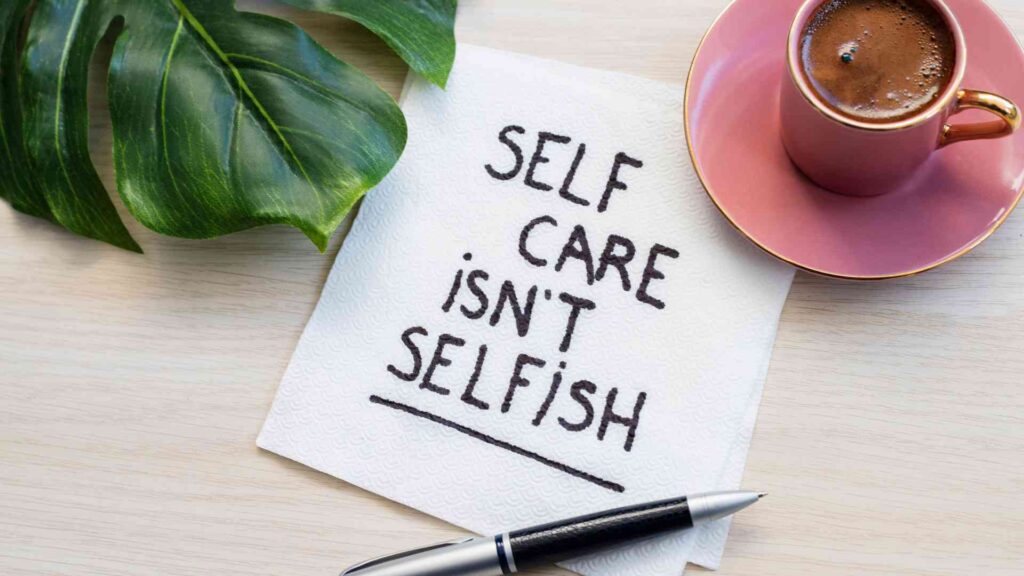Discover comprehensive information for all aspects of sexual health and find resources and guidance to empower your sexual well-being.
Achieving and maintaining a strong penile erection is a common concern for many men. It…
Discover comprehensive information for all aspects of sexual health and find resources and guidance to empower your sexual well-being.
Achieving and maintaining a strong penile erection is a common concern for many men. It…
The underlying cause as well as the severity of pain determine the varied treatment approaches…
Erectile dysfunction (ED) is a common condition that affects millions of men worldwide, causing distress…
Erectile dysfunction (ED) is a condition that many men face at some point in their…
The pelvic floor muscles are the unsung heroes of our body’s core, providing support to…
Erectile dysfunction (ED) is a common condition affecting men, often characterized by the inability to…
Commitment issues can often manifest in romantic relationships, work, and other personal or professional spheres.…
Navigating relationships proves challenging due to the diverse types of relationships and forms of love. What works well for one couple may not be effective for another. Ideally, relationships thrive when all partners’ needs are met in a balanced manner. However, if the scales tilt too far in one direction, you may find yourself entangled in a codependent relationship.
This type of dependence is prevalent in relationships where one party struggles with addiction, such as alcohol or other substances. In fact, the term codependency originated in the field of chemical dependency, coined in the 1950s within the context of Alcoholics Anonymous.
Codependency, while not a clinical diagnosis or a formally categorized personality disorder, encompasses aspects of attachment style patterns developed in early childhood. Additionally, it may overlap with other personality disorders, including dependent personality disorder.
Table of Contents
ToggleIn a codependent relationship, a significant power imbalance typically exists. One person often invests considerable time, energy, and focus in the relationship, while the other person consciously or unconsciously exploits the situation to fulfill their own needs and desires.
Codependent behavior is frequently observed in relationships involving substance use disorders, but it can extend to any connection, including those with bosses, friends, colleagues, or family members.
Initially, when one person’s needs and desires take precedence, it may seem mutually beneficial. Providing support and contributing to someone else’s success can feel positive. However, in the process, individuals may lose sight of their own values, responsibilities, and needs, ultimately losing touch with their identity.
The root cause of codependency lies foundationally in a poor concept of self and poor boundaries, including an inability to have an opinion or say no.

Research suggests that codependency may have various contributing factors encompassing biological, psychological, and social elements:
The prefrontal cortex of a codependent person’s brain may fail to suppress empathic responses, leading to an overabundance of empathy and making it easier to become codependent.
People predisposed to care for others may be more prone to codependency. Additionally, negative life experiences, such as growing up with parents who fought frequently or experiencing neglect or emotional abuse, can play a role in the development of codependency.
Changes in societal views on women’s roles or increased exposure to substance abuse within family units are social factors that may contribute to codependency.
Codependency can manifest in various forms and severity levels, developing in different types of relationships. It can exist in parent-child, partner-partner, spouse-spouse, and even coworker-boss relations.
Codependent relationships often exhibit such a symbiotic nature that identifying them can be challenging. Fortunately, there are discernible signs to watch out for, and many of them involve different manifestations of self-sacrifice and neglect.
In a codependent relationship, one partner typically assumes the role of a caretaker, especially if the other is prone to anger, struggling with active addiction, or facing difficulties in managing responsibilities like paying bills.
The caretaker intervenes to piece things together, attempting to steer the partner towards better and more positive solutions. While this behavior initially stems from a genuine desire to see the partner succeed, it’s crucial to recognize that the responsibility for real and lasting change lies with the other person, and there’s a limit to what the caretaker can achieve. This dynamic can eventually lead to an unbalanced, one-sided relationship.
Related: Disorganized Attachment Style: All You Need To Know
Imperfections are part of being human, but there’s a distinction between minor preferences, like how someone makes their bed, and fundamental differences in character and beliefs. For instance, if you prefer staying at home while your partner enjoys the club scene, there’s potential for codependent behavior if you find yourself continually staying in or going out against your preferences in an attempt to influence or change your partner.
Engaging in activities solely to please the other person, with the hope that your actions will lead them to alter their lifestyle, can be indicative of codependency. This behavior involves sacrificing your desires in an attempt to influence or control the choices of your partner, and it may indicate an imbalance in the relationship dynamics.

Finding it challenging to detach even temporarily for moments of personal peace can be a sign of codependency. If you struggle to muster motivation for activities you would typically enjoy when your partner isn’t present, it may indicate an unhealthy reliance on the relationship.
Codependency can manifest as an intense emotional need for constant connection and may lead to a diminished sense of individuality, making it difficult to engage in personal activities or interests independently.
Difficulty in clearly defining what’s positive or negative in your relationship, coupled with mixed feelings about it, could be an indication that you are overly focused on the other person to the extent that you’re neglecting your own feelings and emotions.
This avoidance of personal issues or emotions may lead you to prioritize satisfying your partner, creating a situation where you derive a temporary high from meeting their needs. However, this approach is a double-edged sword because it can result in neglecting your own needs and emotions, ultimately impacting the overall health of the relationship.

Stressing over someone’s read receipts, constantly checking your phone for their messages, and experiencing panic or worst-case scenario thoughts during periods of separation may indicate an overreliance on your partner for satisfaction. These behaviors can be signs of codependency, where an intense emotional need for constant connection and reassurance from the partner leads to heightened anxiety in their absence.
The frequency with which you spend time alone versus with your partner, as well as your comfort level during moments of solitude, can provide insights into the dynamics of your relationship. If you find it challenging to sit comfortably or be at rest without feeling the need to reach out to your partner, it could be an indication of relying on them as a distraction from your own thoughts or avoiding aspects of your life that need attention
The tendency to carve out an excessive amount of space for your partner at the expense of other relationships and self-care activities can indeed be related to codependency. When you start reaching out less to loved ones and friends, fearing that being busy might jeopardize your connection with your partner, or when you consistently prioritize your partner by canceling plans with others, it may signify an unhealthy dependency on the relationship.

If you’ve found yourself redecorating or redesigning your spaces solely to align with your partner’s tastes, and if your inner sanctuary at home feels less like a personal haven when your partner isn’t present, it could be indicative of codependency. Feeling overly anxious or experiencing waves of sadness when alone at home or when your partner is absent may suggest an excessive emotional reliance on their presence for comfort.
Related: Personal Space: Meaning, Importance and Implications
Hesitancy to speak up for your needs out of fear of the outcome, being labeled as demanding even for small requests, and experiencing the shutdown of your attempts to address problems can be signs of a problematic dynamic in a relationship. Feeling guilty for expressing concerns or being unsure about the validity of your feelings could indicate that your partner is engaging in gaslighting.
Gaslighting is a form of manipulation where one person seeks to undermine another’s perception of reality, making them doubt their own feelings, memories, or sanity. It can create a power imbalance in the relationship, making it challenging for the affected individual to communicate effectively or address issues.
Related: Gaslighting: Meaning, Types, And Examples

If, despite your efforts to communicate, establish healthy boundaries, and address issues, your partner’s behavior escalates or worsens, it can be a clear indication that their needs are taking precedence over your own.
This imbalance in prioritizing one person’s needs over the other can lead to heightened feelings of resentment and regret. Such a pattern can create a distressing cycle, perpetuating ongoing emotional turmoil for both individuals in the relationship.
Indeed, there is a distinction between healthy interdependence and codependency. In a healthy relationship, interdependence is a natural and positive aspect where both individuals can rely on each other for various needs. This mutual reliance fosters a balanced and supportive dynamic.
Codependency, on the other hand, emerges when there is an imbalance in the relationship. In codependent dynamics, one person tends to give more than the other, creating an unequal distribution of met needs. This imbalance can lead to unhealthy patterns, where one individual becomes overly reliant on the other, often at the expense of their own well-being.
Related: What is Secure Attachment Style in Relationships?
Bringing balance back to a relationship requires effort from all parties involved, and there are healthy ways to work with your partner to achieve this. If you’re unsure where to begin, consider the following pointers:
Ask friends or family for their observations about any changes in your behavior or signs of a skewed relationship dynamic. An outside perspective can offer valuable insights that may be difficult to see when you’re emotionally involved.
Reflect on your core values and beliefs that guide your actions. Assess where you may have made sacrifices and examine your feelings about yourself, your career, and your relationships. Understanding your values can help you identify areas for improvement.
Journal about past relationships to identify patterns of behavior that may be repeating. Understanding how certain behaviors made you feel in the past can provide insights into areas for personal growth and help you navigate current and future relationships.
Recognize the importance of establishing and maintaining healthy boundaries. Both partners need to be willing to communicate, listen, and take responsibility for their actions. Open and intentional communication, along with mutual respect for each other’s boundaries, is crucial for reshaping the relationship dynamic.
Remember that the process of bringing balance back to a relationship may be challenging, but the willingness of both parties to do the work and make positive changes is key to fostering a healthier connection.
Note: If your relationship turns dangerous or abusive, either physically or verbally, seek immediate help and find a way to end the relationship. Otherwise, you are the one who decides how much you are willing to tolerate before walking away.
Codependency manifests in various forms and levels of intensity, often resulting in an unhealthy relationship dynamic that deteriorates over time as the codependent person (the giver) loses their sense of self.
The first step is recognizing the signs of codependency. Subsequently, reducing codependent tendencies requires self-awareness and active redirection. As you work through the process, undoing years of learned behavior, remember to be kind to yourself
Reference
Dr. Nishtha, a medical doctor holding both an MBBS and an MD in Biochemistry, possesses a profound passion for nutrition and wellness. Her personal journey, marked by significant struggles with physical and mental health, has endowed her with a unique empathy and insight into the challenges countless individuals face. Driven by her own experiences, she leverages her background to offer practical, evidence-backed guidance, empowering others on their paths to achieving holistic well-being. Dr. Nishtha truly believes in the interconnectedness of the mind and body. She emphasizes the significance of understanding this connection as a crucial stride toward attaining balance and happiness in life.

